The Zone of Proximal Development: A teacher's guide
What is the Zone of proximal development and how can teacher's use this concept to promote learning outcomes?


The Zone of Proximal Development (ZPD) is a pivotal concept in understanding cognitive development within educational psychology, particularly relevant for teachers shaping the learning experiences of their students.
At its core, the ZPD represents the difference between what learners can do independently, which is their level of development, and what they can achieve with guidance, their potential level. This concept is essential in designing supportive activities that stretch a student's capabilities just beyond their current capacity, thereby promoting cognitive growth.
Within the ZPD, learning is neither too easy nor too challenging; it's in this 'zone' that the most effective learning takes place. It acknowledges the dynamic nature of learning, advocating for tailored support that considers cultural contexts and individual learner differences. By providing optimal challenges and scaffolding, educators can help students build upon their existing knowledge and skills.
As we delve deeper into this article, we will explore how educators can identify a student's ZPD and use it to facilitate learning that is both engaging and transformative. We will also consider how the application of the ZPD can be adapted to various cultural contexts, ensuring that the potential level of cognitive development can be reached through culturally responsive teaching methods.
The zone of proximal development indicates the difference between what a student can do without guidance and what he can achieve with the encouragement and guidance of a skilled partner. Therefore, the term “proximal” relates to those skills that the student is “close” to mastering. This theory of learning can be useful for teachers.
Reflective Questions
1. How does ZPD relate to other concepts such as scaffolding or peer tutoring?
2. Why are some students better at using this approach than others?
3. Can you think of any situations where it would be useful for teachers to use this strategy?
4. Is there anything else we should know about ZPD?
5. Do you have any ideas on how to implement this strategy into your own teaching practice?
The historical development of the Zone of Proximal Development (ZPD) is anchored in the work of Soviet psychologist Lev Vygotsky, whose ideas revolutionized educational theory and child psychology. Vygotsky, in the early 20th century, proposed the ZPD against the backdrop of a burgeoning interest in the analysis of learning and cognitive ability.
His theory suggested that children's development is profoundly influenced by their cultural context and the skilled partners in their learning environment.
Vygotsky's pioneering work was largely conducted at the Institute of Psychology in Moscow, where he posited that learning precedes development, a concept that stood in contrast to the prevailing views of the time.
This perspective underscored the importance of social interaction in the development of cognition. Vygotsky observed that through collaborative dialogue and problem-solving with more knowledgeable others—whether teachers, peers, or parents—children could achieve a higher level of understanding and skill than they could independently.
The legacy of Vygotsky's work, particularly the ZPD, has been widely disseminated through a range of universities worldwide. Scholars have expanded on his concepts, exploring the intricacies of how social factors contribute to cognitive development in children.
Western universities have often been the site of rich academic discourse on the subject, with researchers in the United States and Europe analyzing and applying Vygotsky's theories within diverse educational settings.
As part of the broad spectrum of child development theories, the ZPD remains a cornerstone of contemporary educational psychology. It has inspired a wide range of instructional strategies that aim to optimize learning by matching challenges to a child's current capabilities while also stretching them into the realm of potential development.
The historical and ongoing research into the ZPD underscores its significance as a tool for understanding how to effectively support the cognitive and academic growth of children across various cultural and educational landscapes.
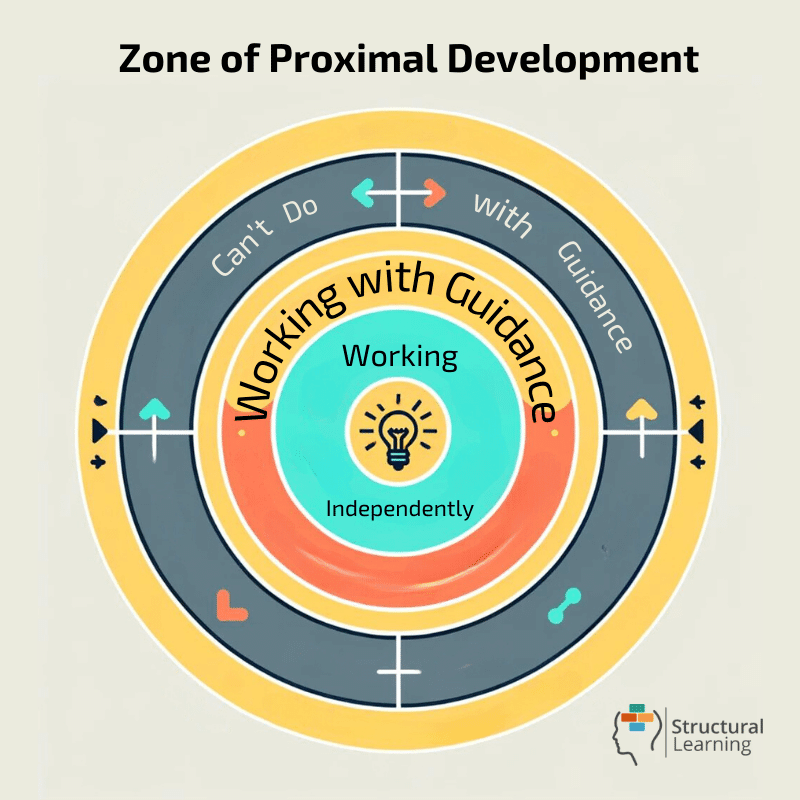
How Does It Work?
When a learner needs assistance, they ask their peers or instructors for advice. The instructor provides feedback based on the learner's performance. This helps them learn new strategies and techniques. As the learner masters these new skills, the instructor gradually reduces her involvement until she no longer offers direct instruction. At this point, the learner is capable of performing the activity independently.
To help a student to move through the zone of proximal development, teachers must focus on three essential components that facilitate the learning process:
The zone of proximal development (ZPD), is an educational notion constantly restated by the professors in the lecture halls. However, why is it so crucial in a classroom setting for a childs mental development? The crux of the zone of proximal development is that a child with more skills and mastery (the skilled partner), can be used to enhance the potential level of knowledge and another individual.
These type of social interactions can be used to enhance educational outcomes in problem-based learning activities. The level of challenge can be incrementally increased with appropriate levels of scaffolding in a way that neither individual feels overwhelmed by the complexity of the task.
This type of social interaction can be used as a catalyst for critical thinking. The interaction with peers enables children to engage cognitively at much higher levels.
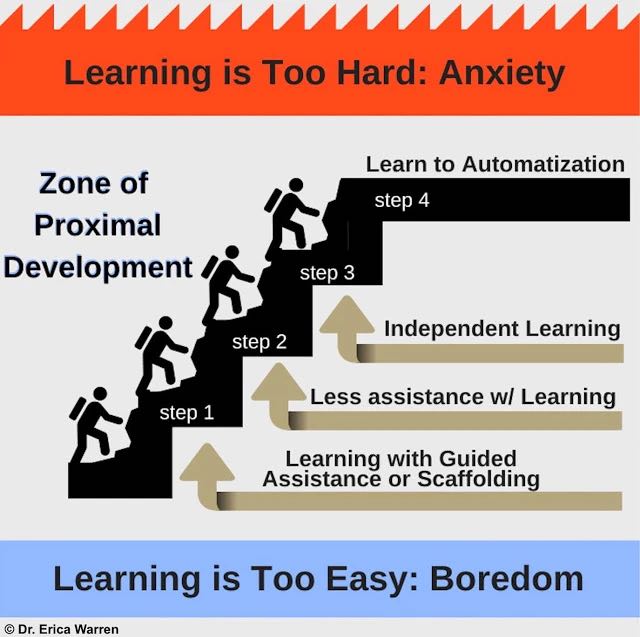
The implications for classroom practice are profound. If we can scaffold the cognitive function of a child at an appropriate level, we can enable them to advance their learning and develop new skills. In a classroom setting, we want to improve both access to the curriculum and the level of challenge. Our alternative approach to lesson planning and delivery using the universal thinking framework enables educators to fully embrace this philosophy.
The concept of pairing guidance with a student is termed scaffolding. The ZPD is frequently used in the literature as the term scaffolding. But, it is must be remembered that Vygotsky never used this word in his writing, and it was first used by Wood, Bruner and Ross (1976). The individual performing the scaffolding can be a peer, a teacher, or even a parent. To help students gain independence, Wood, Bruner and Ross (1976) defined support and supervision offered by a more capable or knowledgeable person (instructor or parent) to perform a task that the child would not be able to perform independently.
Students take easy and manageable steps to achieve a goal. Working in partnership with more knowledgeable peers or a skilled instructor will help learners in making connections between different concepts.

As students thrive within their zone of proximal development and come to be more confident, they perform new tasks using the social support that exists around them. Vygotsky proposed that learning takes place using meaningful and purposeful interactions with others. We have been embracing this learning theory within our concept of mental modelling. This collaborative learning approach enables students to take their thinking out of their head where they have more capacity.
Using brightly coloured blocks, students organise their thoughts and develop new ideas.Uses of this methodology take their current knowledge and build on it with others (quite literally). Their previous knowledge acts as a foundation for increasing their conceptual understanding of the topic in question. The students level of knowledge is reflected within the sophistication of the structure of their build. When students are in the 'zone', their learning potential is significantly increased.
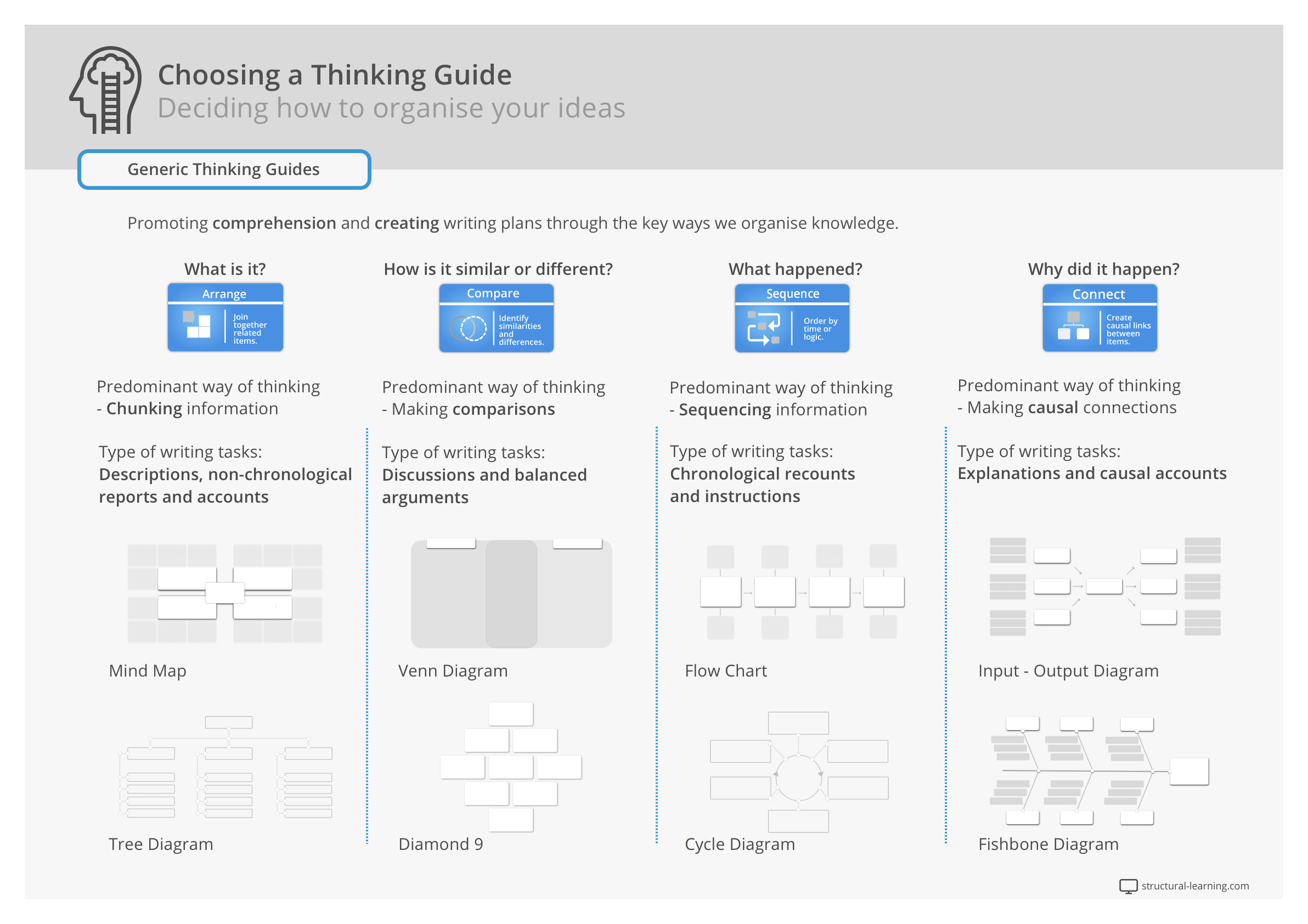
This approach to classroom learning makes activities such as language learning more engaging and at the same time more challenging. The incremental nature of block building means that a student working memory is rarely overloaded. The level of flexibility within the strategy means that it can be used for discovery learning or at the other end of the spectrum, direct instruction approaches.
The blocks can be used to make abstract concepts more concrete. The connections between concepts can be illustrated using the connections between the blocks. This visual queue acts as a 'memory anchor' that serves as a retrieval aid. This process is a perfect example of the concept of scaffolding.

Classroom learning should be challenging enough to be engaging and the concept of proximal development comes in very useful when thinking about activities such as lesson planning. If we can break classroom tasks down into manageable chunks, with the correct adult assistance, we can enable a pupil to think their way through most challenges. Improving access to education is a global goal we all share.
Our community of practice has demonstrated how this can be achieved by utilising the latest thinking in cognitive science. You don't need to be a professor of education to embrace powerful psychological principles of the mind. Instructional concepts such as dual coding, mind-mapping and oracy all enable children to push the boundaries of what they are capable of. The adult becomes the facilitator instead of the deliverer of knowledge construction.

Wood and Middleton (1975) examined the interaction between 4-year-old children and their mothers in a problem-solving situation. The children had to use a set of pegs and blocks to create a 3D model using a picture. The task was too difficult for these children to complete on their own.
Wood and Middleton (1975) evaluated how mothers assisted their children to create the 3D model. Different kinds of support included:
This study revealed that no single strategy was sufficient to help each child to progress. Mothers, who modified their help according to their children's performance were found to be the most successful. When these mothers saw their children doing well, they reduced their level of help. When they saw their child began to struggle, they increased their level of help by providing specific instructions until the child showed progress again.
This study illustrates Vygotsky's concept of the ZPD and scaffolding. Scaffolding (or guidance) is most beneficial when the support is according to the specific needs of a child. This puts a child in a position to gain success in an activity that he would not have been able to do in the past.
Wood et al. (1976) mentioned some processes that help effective scaffolding:
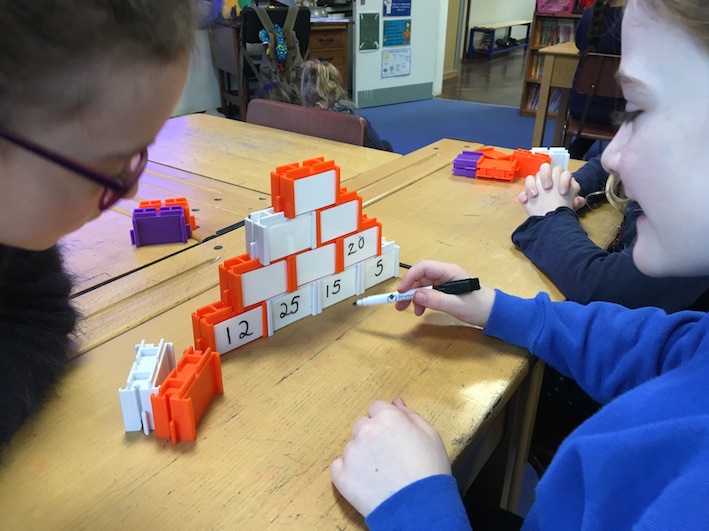
Vygotsky argues that the role of education is to provide those experiences to children which are in their ZPD, thereby advancing and encouraging their knowledge. Vygotsky believes that the teachers are like a mediator in the children's learning activity as they share information through social interaction.
Vygotsky perceived interaction with peers as a helpful way to build skills. He implies that for children with low competence teachers need to use cooperative learning strategies and they must seek help from more competent peers in the zone of proximal development.
Scaffolding is a significant component of effective teaching, in which the more competent individual continually modifies the level of his help according to the learner's performance level. Scaffolding in the classroom may include modelling a talent, providing cues or hints, and adapting activity or material. Teachers need to consider the following guidelines for scaffolding instruction.
A current application of Vygotsky's concepts is "reciprocal teaching," used to enhance students' ability to memorize from the text. In this type of teaching, educator and learners collaborate to memorize and practice four major skills: predicting, clarifying, questioning, and summarizing. The role of a teacher in this process is decreased over time.
Vygotsky's theories also address the recent interest in collaborative learning, implying that group members mostly have different levels of talent so more advanced peers must help less advanced students within their zone of proximal development.
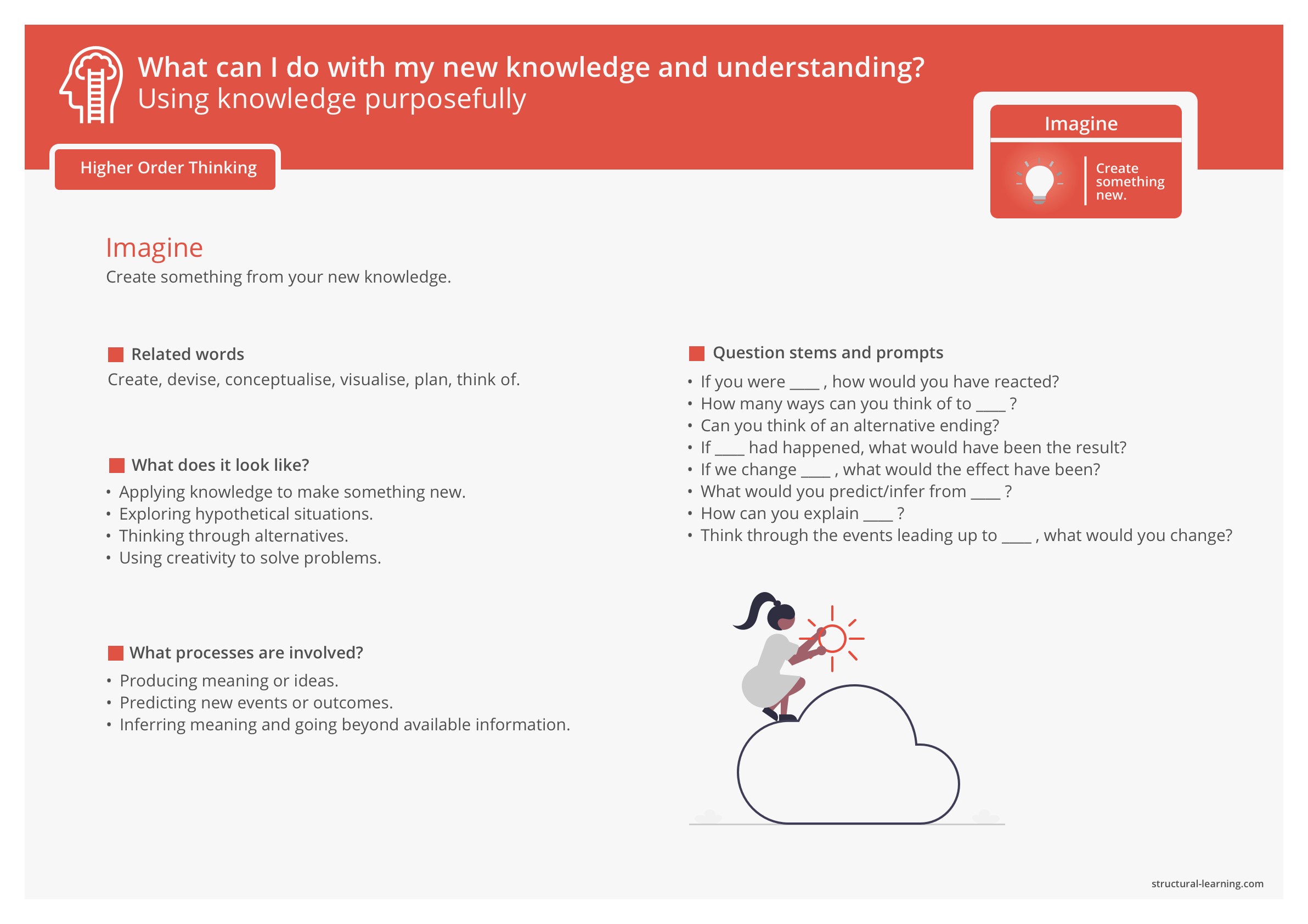
In the realm of educational psychology, the Zone of Proximal Development (ZPD) is a concept that has been embraced by educators and learners alike. It's a theoretical space where learners can achieve more with guidance and support than they could independently. Here are nine fictional examples of how ZPD can be utilized to advance the learning process:
These examples demonstrate the power of the ZPD in facilitating learning across a range of contexts. By providing the right level of support at the right time, educators can guide learners to new levels of achievement.
Key Insights:

Assessing learners' progress through the Zone of Proximal Development (ZPD) requires a nuanced understanding of each student's developmental level, taking into account their potential development as well as their current level of competence. Rooted in sociocultural theory, the ZPD concept emphasizes the dynamic interplay between a child's individual mental development and their social environment, particularly in a classroom setting.
To effectively evaluate childhood learning and growth within the ZPD, teachers must first determine a student's level of knowledge and skill in relation to the learning task at hand. This assessment should consider the level of difficulty a student can manage independently, as well as their potential level when guided by a knowledgeable peer or adult. By identifying this range, educators can design learning tasks and scaffold instruction to maximize each student's potential development.
It is important to recognize that the ZPD is not static; rather, it evolves as a student's learning outcomes and level of competence change. Therefore, ongoing assessments should be implemented to monitor progress and adjust instructional strategies accordingly. Teachers can utilize a variety of assessment methods, such as formative assessments, observation, and student self-assessments, to gauge a student's current level and potential within the ZPD.
By thoughtfully assessing learners' progress within the Zone of Proximal Development, teachers can create a classroom environment that fosters optimal mental development, empowering students to thrive as they navigate new challenges and acquire increasingly complex skills.

Here are five key research papers on the Zone of Proximal Development (ZPD). These studies provide comprehensive insights into ZPD, highlighting its impact on educational processes, teacher development, and child learning.
1. Re/Thinking the Zone of Proximal Development by Wolff‐Michael Roth and L. Radford (2011)
This paper revisits the ZPD, emphasizing its application in understanding and promoting child development through interaction with skilled partners and adult guidance. It highlights the significance of ZPD in both theoretical and practical aspects of education.
2. The Zone of Proximal Teacher Development by Mark K. Warford (2011)
Warford's study integrates Vygotskyan theory into Western education models, creating the Zone of Proximal Teacher Development (ZPTD). It offers curriculum recommendations to enhance teacher development, aligning with the principles of ZPD and focusing on individual student's learning outcomes.
3. Current Activity for the Future: The Zo‐ped by P. Griffin and M. Cole (1984)
Griffin and Cole explore ZPD in the context of childhood learning activities, highlighting how it aids in the development of cognitive and social skills. The study discusses the reciprocal teaching and learning processes within ZPD.
4. The Cultural-Historical Foundations of the Zone of Proximal Development by E. Kravtsova (2009)
This paper delves into the cultural-historical roots of ZPD, discussing its influence on developmental education. Kravtsova emphasizes the use of neoformations and leading activity as key indicators in child development assessments.
5. Proximity as a Window into the Zone of Proximal Development by Brendan Jacobs and A. Usher (2018)
Jacobs and Usher illustrate how digital technologies can enhance project-based learning within the ZPD. Their study shows the effective use of proximity technology in primary education to facilitate conceptual consolidation and collaborative learning.
These studies provide comprehensive insights into ZPD, highlighting its impact on educational processes, teacher development, and child learning.
The Zone of Proximal Development (ZPD) is a pivotal concept in understanding cognitive development within educational psychology, particularly relevant for teachers shaping the learning experiences of their students.
At its core, the ZPD represents the difference between what learners can do independently, which is their level of development, and what they can achieve with guidance, their potential level. This concept is essential in designing supportive activities that stretch a student's capabilities just beyond their current capacity, thereby promoting cognitive growth.
Within the ZPD, learning is neither too easy nor too challenging; it's in this 'zone' that the most effective learning takes place. It acknowledges the dynamic nature of learning, advocating for tailored support that considers cultural contexts and individual learner differences. By providing optimal challenges and scaffolding, educators can help students build upon their existing knowledge and skills.
As we delve deeper into this article, we will explore how educators can identify a student's ZPD and use it to facilitate learning that is both engaging and transformative. We will also consider how the application of the ZPD can be adapted to various cultural contexts, ensuring that the potential level of cognitive development can be reached through culturally responsive teaching methods.
The zone of proximal development indicates the difference between what a student can do without guidance and what he can achieve with the encouragement and guidance of a skilled partner. Therefore, the term “proximal” relates to those skills that the student is “close” to mastering. This theory of learning can be useful for teachers.
Reflective Questions
1. How does ZPD relate to other concepts such as scaffolding or peer tutoring?
2. Why are some students better at using this approach than others?
3. Can you think of any situations where it would be useful for teachers to use this strategy?
4. Is there anything else we should know about ZPD?
5. Do you have any ideas on how to implement this strategy into your own teaching practice?
The historical development of the Zone of Proximal Development (ZPD) is anchored in the work of Soviet psychologist Lev Vygotsky, whose ideas revolutionized educational theory and child psychology. Vygotsky, in the early 20th century, proposed the ZPD against the backdrop of a burgeoning interest in the analysis of learning and cognitive ability.
His theory suggested that children's development is profoundly influenced by their cultural context and the skilled partners in their learning environment.
Vygotsky's pioneering work was largely conducted at the Institute of Psychology in Moscow, where he posited that learning precedes development, a concept that stood in contrast to the prevailing views of the time.
This perspective underscored the importance of social interaction in the development of cognition. Vygotsky observed that through collaborative dialogue and problem-solving with more knowledgeable others—whether teachers, peers, or parents—children could achieve a higher level of understanding and skill than they could independently.
The legacy of Vygotsky's work, particularly the ZPD, has been widely disseminated through a range of universities worldwide. Scholars have expanded on his concepts, exploring the intricacies of how social factors contribute to cognitive development in children.
Western universities have often been the site of rich academic discourse on the subject, with researchers in the United States and Europe analyzing and applying Vygotsky's theories within diverse educational settings.
As part of the broad spectrum of child development theories, the ZPD remains a cornerstone of contemporary educational psychology. It has inspired a wide range of instructional strategies that aim to optimize learning by matching challenges to a child's current capabilities while also stretching them into the realm of potential development.
The historical and ongoing research into the ZPD underscores its significance as a tool for understanding how to effectively support the cognitive and academic growth of children across various cultural and educational landscapes.

How Does It Work?
When a learner needs assistance, they ask their peers or instructors for advice. The instructor provides feedback based on the learner's performance. This helps them learn new strategies and techniques. As the learner masters these new skills, the instructor gradually reduces her involvement until she no longer offers direct instruction. At this point, the learner is capable of performing the activity independently.
To help a student to move through the zone of proximal development, teachers must focus on three essential components that facilitate the learning process:
The zone of proximal development (ZPD), is an educational notion constantly restated by the professors in the lecture halls. However, why is it so crucial in a classroom setting for a childs mental development? The crux of the zone of proximal development is that a child with more skills and mastery (the skilled partner), can be used to enhance the potential level of knowledge and another individual.
These type of social interactions can be used to enhance educational outcomes in problem-based learning activities. The level of challenge can be incrementally increased with appropriate levels of scaffolding in a way that neither individual feels overwhelmed by the complexity of the task.
This type of social interaction can be used as a catalyst for critical thinking. The interaction with peers enables children to engage cognitively at much higher levels.

The implications for classroom practice are profound. If we can scaffold the cognitive function of a child at an appropriate level, we can enable them to advance their learning and develop new skills. In a classroom setting, we want to improve both access to the curriculum and the level of challenge. Our alternative approach to lesson planning and delivery using the universal thinking framework enables educators to fully embrace this philosophy.
The concept of pairing guidance with a student is termed scaffolding. The ZPD is frequently used in the literature as the term scaffolding. But, it is must be remembered that Vygotsky never used this word in his writing, and it was first used by Wood, Bruner and Ross (1976). The individual performing the scaffolding can be a peer, a teacher, or even a parent. To help students gain independence, Wood, Bruner and Ross (1976) defined support and supervision offered by a more capable or knowledgeable person (instructor or parent) to perform a task that the child would not be able to perform independently.
Students take easy and manageable steps to achieve a goal. Working in partnership with more knowledgeable peers or a skilled instructor will help learners in making connections between different concepts.

As students thrive within their zone of proximal development and come to be more confident, they perform new tasks using the social support that exists around them. Vygotsky proposed that learning takes place using meaningful and purposeful interactions with others. We have been embracing this learning theory within our concept of mental modelling. This collaborative learning approach enables students to take their thinking out of their head where they have more capacity.
Using brightly coloured blocks, students organise their thoughts and develop new ideas.Uses of this methodology take their current knowledge and build on it with others (quite literally). Their previous knowledge acts as a foundation for increasing their conceptual understanding of the topic in question. The students level of knowledge is reflected within the sophistication of the structure of their build. When students are in the 'zone', their learning potential is significantly increased.

This approach to classroom learning makes activities such as language learning more engaging and at the same time more challenging. The incremental nature of block building means that a student working memory is rarely overloaded. The level of flexibility within the strategy means that it can be used for discovery learning or at the other end of the spectrum, direct instruction approaches.
The blocks can be used to make abstract concepts more concrete. The connections between concepts can be illustrated using the connections between the blocks. This visual queue acts as a 'memory anchor' that serves as a retrieval aid. This process is a perfect example of the concept of scaffolding.

Classroom learning should be challenging enough to be engaging and the concept of proximal development comes in very useful when thinking about activities such as lesson planning. If we can break classroom tasks down into manageable chunks, with the correct adult assistance, we can enable a pupil to think their way through most challenges. Improving access to education is a global goal we all share.
Our community of practice has demonstrated how this can be achieved by utilising the latest thinking in cognitive science. You don't need to be a professor of education to embrace powerful psychological principles of the mind. Instructional concepts such as dual coding, mind-mapping and oracy all enable children to push the boundaries of what they are capable of. The adult becomes the facilitator instead of the deliverer of knowledge construction.

Wood and Middleton (1975) examined the interaction between 4-year-old children and their mothers in a problem-solving situation. The children had to use a set of pegs and blocks to create a 3D model using a picture. The task was too difficult for these children to complete on their own.
Wood and Middleton (1975) evaluated how mothers assisted their children to create the 3D model. Different kinds of support included:
This study revealed that no single strategy was sufficient to help each child to progress. Mothers, who modified their help according to their children's performance were found to be the most successful. When these mothers saw their children doing well, they reduced their level of help. When they saw their child began to struggle, they increased their level of help by providing specific instructions until the child showed progress again.
This study illustrates Vygotsky's concept of the ZPD and scaffolding. Scaffolding (or guidance) is most beneficial when the support is according to the specific needs of a child. This puts a child in a position to gain success in an activity that he would not have been able to do in the past.
Wood et al. (1976) mentioned some processes that help effective scaffolding:

Vygotsky argues that the role of education is to provide those experiences to children which are in their ZPD, thereby advancing and encouraging their knowledge. Vygotsky believes that the teachers are like a mediator in the children's learning activity as they share information through social interaction.
Vygotsky perceived interaction with peers as a helpful way to build skills. He implies that for children with low competence teachers need to use cooperative learning strategies and they must seek help from more competent peers in the zone of proximal development.
Scaffolding is a significant component of effective teaching, in which the more competent individual continually modifies the level of his help according to the learner's performance level. Scaffolding in the classroom may include modelling a talent, providing cues or hints, and adapting activity or material. Teachers need to consider the following guidelines for scaffolding instruction.
A current application of Vygotsky's concepts is "reciprocal teaching," used to enhance students' ability to memorize from the text. In this type of teaching, educator and learners collaborate to memorize and practice four major skills: predicting, clarifying, questioning, and summarizing. The role of a teacher in this process is decreased over time.
Vygotsky's theories also address the recent interest in collaborative learning, implying that group members mostly have different levels of talent so more advanced peers must help less advanced students within their zone of proximal development.

In the realm of educational psychology, the Zone of Proximal Development (ZPD) is a concept that has been embraced by educators and learners alike. It's a theoretical space where learners can achieve more with guidance and support than they could independently. Here are nine fictional examples of how ZPD can be utilized to advance the learning process:
These examples demonstrate the power of the ZPD in facilitating learning across a range of contexts. By providing the right level of support at the right time, educators can guide learners to new levels of achievement.
Key Insights:

Assessing learners' progress through the Zone of Proximal Development (ZPD) requires a nuanced understanding of each student's developmental level, taking into account their potential development as well as their current level of competence. Rooted in sociocultural theory, the ZPD concept emphasizes the dynamic interplay between a child's individual mental development and their social environment, particularly in a classroom setting.
To effectively evaluate childhood learning and growth within the ZPD, teachers must first determine a student's level of knowledge and skill in relation to the learning task at hand. This assessment should consider the level of difficulty a student can manage independently, as well as their potential level when guided by a knowledgeable peer or adult. By identifying this range, educators can design learning tasks and scaffold instruction to maximize each student's potential development.
It is important to recognize that the ZPD is not static; rather, it evolves as a student's learning outcomes and level of competence change. Therefore, ongoing assessments should be implemented to monitor progress and adjust instructional strategies accordingly. Teachers can utilize a variety of assessment methods, such as formative assessments, observation, and student self-assessments, to gauge a student's current level and potential within the ZPD.
By thoughtfully assessing learners' progress within the Zone of Proximal Development, teachers can create a classroom environment that fosters optimal mental development, empowering students to thrive as they navigate new challenges and acquire increasingly complex skills.

Here are five key research papers on the Zone of Proximal Development (ZPD). These studies provide comprehensive insights into ZPD, highlighting its impact on educational processes, teacher development, and child learning.
1. Re/Thinking the Zone of Proximal Development by Wolff‐Michael Roth and L. Radford (2011)
This paper revisits the ZPD, emphasizing its application in understanding and promoting child development through interaction with skilled partners and adult guidance. It highlights the significance of ZPD in both theoretical and practical aspects of education.
2. The Zone of Proximal Teacher Development by Mark K. Warford (2011)
Warford's study integrates Vygotskyan theory into Western education models, creating the Zone of Proximal Teacher Development (ZPTD). It offers curriculum recommendations to enhance teacher development, aligning with the principles of ZPD and focusing on individual student's learning outcomes.
3. Current Activity for the Future: The Zo‐ped by P. Griffin and M. Cole (1984)
Griffin and Cole explore ZPD in the context of childhood learning activities, highlighting how it aids in the development of cognitive and social skills. The study discusses the reciprocal teaching and learning processes within ZPD.
4. The Cultural-Historical Foundations of the Zone of Proximal Development by E. Kravtsova (2009)
This paper delves into the cultural-historical roots of ZPD, discussing its influence on developmental education. Kravtsova emphasizes the use of neoformations and leading activity as key indicators in child development assessments.
5. Proximity as a Window into the Zone of Proximal Development by Brendan Jacobs and A. Usher (2018)
Jacobs and Usher illustrate how digital technologies can enhance project-based learning within the ZPD. Their study shows the effective use of proximity technology in primary education to facilitate conceptual consolidation and collaborative learning.
These studies provide comprehensive insights into ZPD, highlighting its impact on educational processes, teacher development, and child learning.